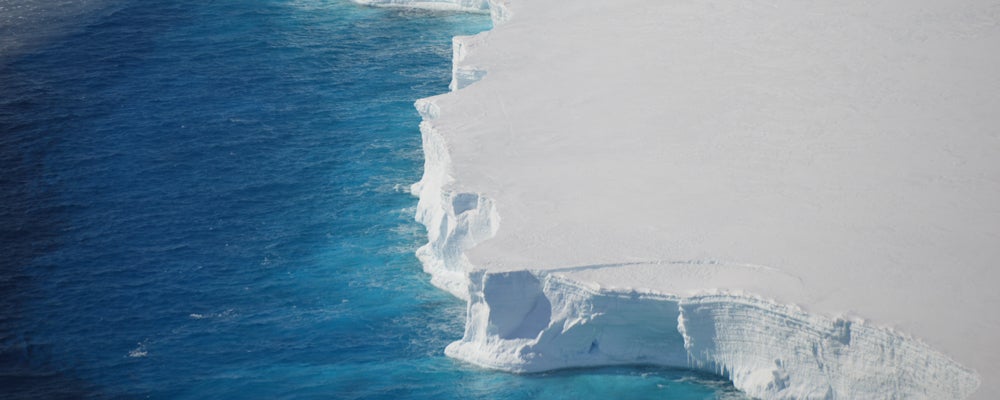A
new
study
from
the
University
of
Waterloo
discovered
that
rising
sea
levels
could
be
accelerated
by
vulnerable ice
shelves
in
the
Antarctic.
The
study,
by
an
international
team
of
polar
scientists
led
by
Canada
Research
Chair
and
Water
Institute
member
Christine
Dow,
discovered
that
the
process
of
warmer
ocean
water
destabilizing
ice
shelves
from
below
is
also
cracking
them
apart
from
above,
increasing
the
chance
they’ll
break
off.

The front of Nansen Ice Shelf. Photo credits: Canada Research Chair Christine Dow of the University of Waterloo’s Faculty of Environment.
“We are learning that ice shelves are more vulnerable to rising ocean and air temperatures than we thought,” said Dow. “There are dual processes going on here. One that is destabilizing from below, and another from above. This information could have an impact on our projected timelines for ice shelf collapse and resulting sea level rise due to climate change.”
The
study,
which
was
conducted
over
two
years,
applied
methods
similar
to
forensic
science
on
ice
shelves
which
had
already
calved.
Using
radar
surveys
and
Landsat
imagery,
Dow
reports
direct
evidence
that
a
major
2016
calving
event
at
Nansen
Ice
Shelf
in
the
Ross
Sea
was
the
result
of
fracture
driven
by
channels
melted
into
the
bottom
of
the
ice
shelf.
The
surveys
also
demonstrated
that
similar
basal
channel-driven
transverse
fractures
occur
elsewhere
in
Greenland
and
Antarctica.
As
warmer
salt
water
erodes
channels
into
the
ice
that
attaches
glaciers
to
stable
land,
it
also
generates
massive
vertical
fractures
splitting
glaciers
from
above
and
below.
Surface
water
melting
on
top
of
the
ice
shelves
then
pours
into
these
cracks,
accelerating
the
problem
further.
“This
study
is
more
evidence
that
the
warming
effects
of
climate
change
are
impacting
our
planet
in
ways
that
are
often
more
dangerous
than
we
perhaps
had
thought,”
said
Dow.
“There
are
many
more
vulnerable
ice
shelves
in
the
Antarctic
that,
if
they
break
up,
will
accelerate
the
processes
of
sea
level
rise.”
The
study,
titled
Basal
channels
drive
active
surface
hydrology
and
transverse
ice
shelf
fracture,
was
recently
published
in AAAS
Science Advances.